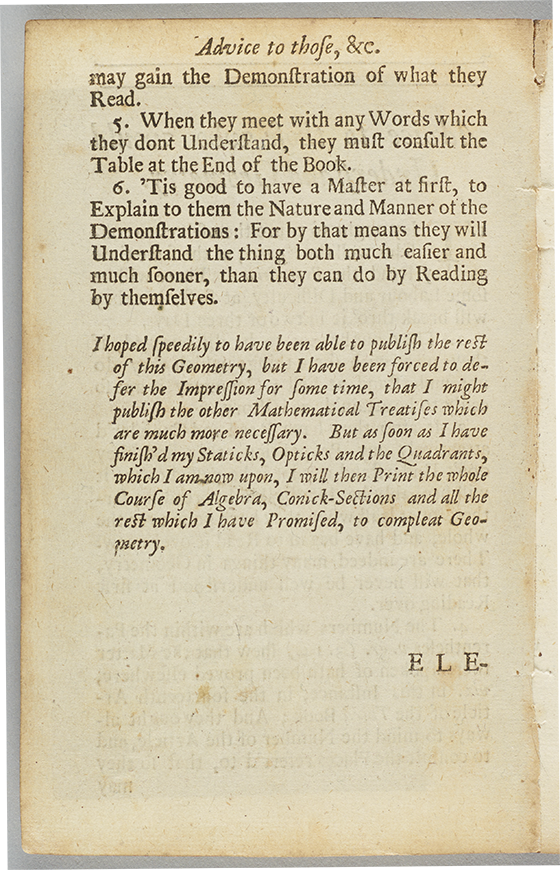- About MAA
- Membership
- MAA Publications
- Periodicals
- Blogs
- MAA Book Series
- MAA Press (an imprint of the AMS)
- MAA Notes
- MAA Reviews
- Mathematical Communication
- Information for Libraries
- Author Resources
- Advertise with MAA
- Meetings
- Competitions
- Programs
- Communities
- MAA Sections
- SIGMAA
- MAA Connect
- Students
- MAA Awards
- Awards Booklets
- Writing Awards
- Teaching Awards
- Service Awards
- Research Awards
- Lecture Awards
- Putnam Competition Individual and Team Winners
- D. E. Shaw Group AMC 8 Awards & Certificates
- Maryam Mirzakhani AMC 10 A Awards & Certificates
- Two Sigma AMC 10 B Awards & Certificates
- Jane Street AMC 12 A Awards & Certificates
- Akamai AMC 12 B Awards & Certificates
- High School Teachers
- News
You are here
Mathematical Treasures - Pardies's Practical Geometry
Ignatius Pardies (1636–1673) was a Jesuit philosopher and mathematician. Pardies was an ardent Cartesian and an active correspondent on the 17th-century mathematical scene. Pardies believed that geometry should be taught in an informal way rather than in the traditional manner of Euclid. In 1671, he published his own tract on the subject, Elemens de Geometrie. This text was frequently reprinted and translated into other languages, including Dutch in 1690 and Latin in 1693. The English publisher John Harris translated Pardies' Elemens into English and appended his own tract on trigonometry, releasing the resulting book as Short but Plain Elements of Geometry and Plain Trigonometry in 1701.

In his foreword, the author advised the reader about learning geometry.


These sample pages demonstrate Pardies's practical, direct approach to geometry instruction. Note the use of applied geometry and the reference to measuring instruments.






These images from its George Arthur Plimpton Collection are presented through the courtesy of the Columbia University Libraries.
For images of a 1690s translation into Chinese of this book, see the article, Mathematical Treasure: Euclid in China in Convergence.
Frank J. Swetz (The Pennsylvania State University), "Mathematical Treasures - Pardies's Practical Geometry ," Convergence (January 2020)




